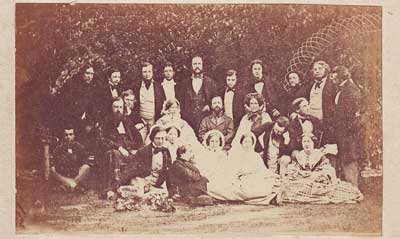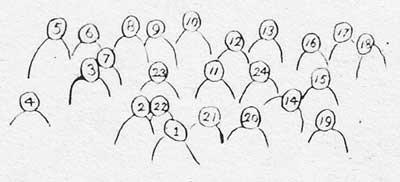Charles Dickens with his Family, Friends and the Cast of the "Frozen Deep"
July, 12, 1857
Media: Albumen photograph mounted on card stock
Photographer: William Jeffrey (1826-1877)
Essay written and published: 2017
Key to the Photograph
Back Row Standing
Second Row, Sitting in Chairs
Front Row Seated on the Grass

